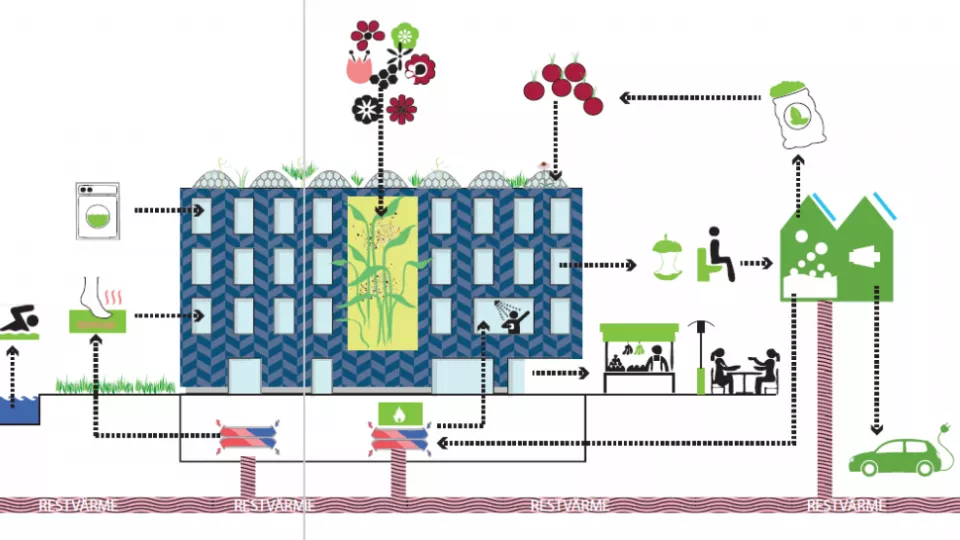These four municipalities plan to use this residual heat to produce fish, vegetables and other biological goods in production units located in their respective urban areas. They aim to incorporate the concepts of sustainability, the circular economy and zero waste into a new service in their localities, one which will have positive socioeconomic benefits such as employment, education and urban gentrification.
In their search for solutions, these municipalities have announced a joint Open Innovation Competition where the winning ideas will be incorporated into developing a final proposal. The competition is supported by Vinnova, Sweden’s innovation agency. The consortia is seeking the submission of ideas to solve a number of challenge areas, as well as those that may build and improve upon the whole concept of using waste heat for food production
Open Innovation Challenge Areas
#1 Technical Challenges – these refer to the obstacles faced by the project which only technology will be able to overcome. The vision is to collect the waste heat at source and transport it – most probably as warm water – to the site where it can be used to heat facilities and equipment for the production of vegetables, fish and other biological goods. This however, is not an easy task and there are challenges in every aspect of this journey. Including:
Identification and capture of waste heat
How can the water temperature be maintained between source and site? The temperature is the value of the water, minimizing heat loss therefore maximises the value of the resource.
How can supply fluctuations be overcome? It is unlikely that heated water flows will remain constant throughout any period of time. How can we regulate and/or store the heat for use when the rate of supply declines?
#2 The biological production challenges – there are many of these involved in building and operating a successful and efficient urban food production unit. Within the unit itself there are many factors which will enhance the project’s overall productivity. These include:
Identifying the optimal temperature, lighting, ventilation, soil and PH values.
Obtaining the optimal mix of cultivated plants and fish and aquatic livestock
Selecting appropriate and sustainable agricultural/aquacultural inputs such as fish feeds and plant fertilisers.
It is intended that the production unit functions as a demonstration of how the circular economy is possible in today’s world. Finding new and innovative ways to reduce waste within the unit’s operations is therefore vital for the project’s ultimate success.
#3 Business challenges – the project aims to deliver not just food production but wider social value to the community alongside economic sustainability. Creative and ambitious plans and strategies are sought to achieve that. Elements that need to be considered include:
The production volume and the price elasticity of the end consumers in relation to the production output
The potential for job creation
Social benefits such as the potential for site visits, knowledge sharing, etc.
Although the basic elements of the vision are fixed eg. food and other biological production with the use of waste heat, there are many other areas where new and innovative proposals and ideas can fill gaps or build upon the concept to make its realisation an astounding success.
How the competition works
The Open Innovation Competition is structured in three distinct stages, each of which will see the final number of participants reduced. It is also designed to be much more than a traditional competition. By incorporating the principles of Open Innovation into the DNA of the processes, it will act as a platform for innovative participants to collaborate and co-develop their ideas within a community of driven, likeminded people.
Participants reaching the second round will be offered professional advice and assistance on how best to progress with turning their ideas into reality.
SEK 2 million (approx EUR 210,000) is available in prize money for the whole competition. Awards will be made to those participating at each stage of the competition from the second round onwards, with a significant amount reserved for the winner. The winner will also have the opportunity to build on their exciting idea and be involved in the final proposal. The prize money is an award from Vinnova, Sweden’s innovation agency, together with the organising partners.
The competition manual, proposal template and further information about the sites is available for download from the tabs below. The documents will be continuously updated until 1 May. No changes will be made after that date.
Read more and apply here.


